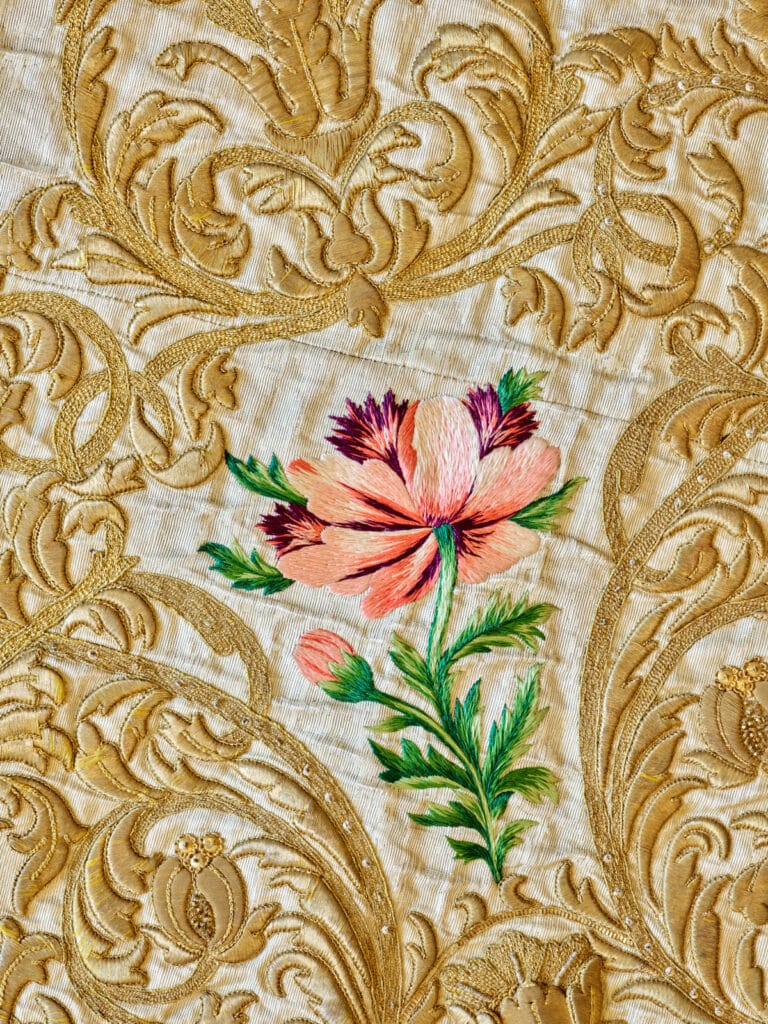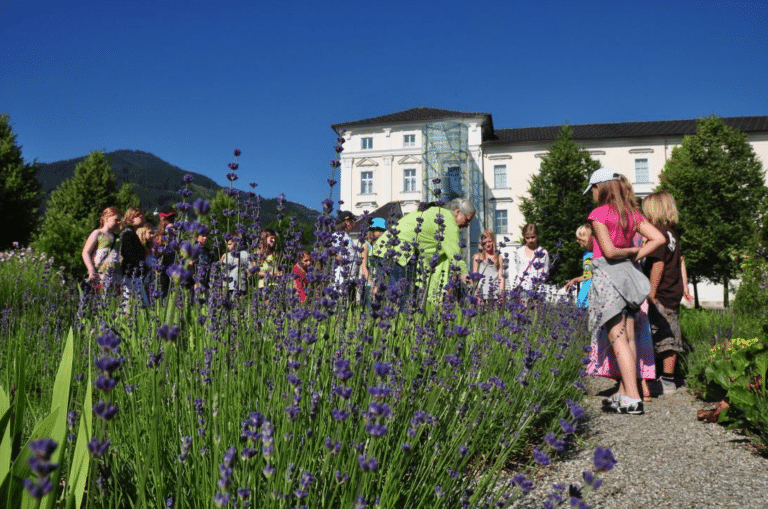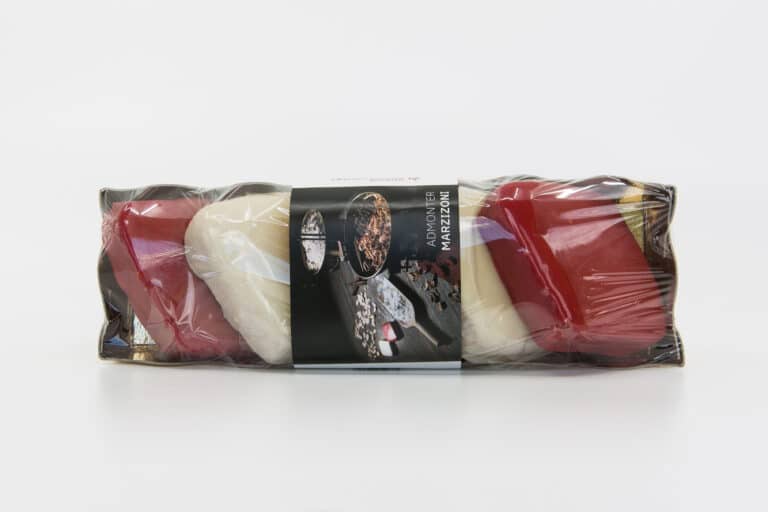Silk heritage
The entire splendour of the Baroque style period seems to unfold on the Christmas vestment. It was used as a chasuble for centuries. Today it is a museum exhibit.
The parament collection of the Benedictine monastery in Admont is probably one of the most important and extensive in the German-speaking world. Five of the ornate ornaments were made by Frater Benno Haan, who lived as a monk in Admont until 1720. With this Christmas ornament, the embroiderer has created a masterpiece that shows needle painting in its most perfect form. The threads of his embroidery look like fine brushstrokes, with skilful colour gradations that resemble painted pictures. "The Christmas ornament was created in the Baroque period. A time when people wanted to show heaven on earth. This vestment was designed to be correspondingly festive," says Frater Alexander Weiss, explaining the sumptuous decoration. However, the chosen motifs do not depict a Christmas scene, but rather the symbols of the four evangelists, as well as a multitude of saints and colourful flowers. The silk habit got its name from its intended use, as it was mainly worn at pontifical masses on Christmas holidays.
Much copied original
In May 2018, Frater Alexander Weiss was appointed Custodian of the Paraments, giving him great responsibility. "My job is to preserve this heritage for posterity," says the custodian about one of his main tasks: Storing the precious vestments. A particularly delicate matter, as he reveals: "The majority of our vestments are stored horizontally in a light-protected and temperature-controlled room. This prevents the fabrics from tearing or becoming brittle, which can happen all too easily if they are hung on hangers." To keep the precious vestments safe, the vestment room is equipped with floor-to-ceiling cupboards in which the ornaments are stored in metre-long drawers. The Christmas regalia takes up several of these drawers.
"It's a whole set comprising a total of fourteen textiles," says the curator, explaining the large amount of space required. When you open the drawer in which the chasuble of the Christmas vestment is kept, one detail immediately catches your eye: long fringes made of gold thread adorn the right and left outer sides of the ecclesiastical chasuble. The custodian knows that this is a special feature of all the vestments by master embroiderer Benno Haan: "These fringes are a typical stylistic element of his work that was adopted by his successors. That's why the ornates that were created after Benno Haan's work in Admont also have fringes." This unmistakable feature is another reason why the paraments of the Benedictine monastery are a worldwide rarity.
THE CHRISTMAS ORNAMENT AT A GLANCE:
The ecclesiastical vestment is made of pure silk and was made by Frater Benno Haan in 1680. It is a set comprising fourteen textiles:
- A chasuble with stole: the abbot's chasuble
- A pair of gloves
- A pair of shoes
- Two dalmatic vestments with stole: Deacons' festive vestments
- Three maniplets: part of a liturgical vestment that was placed over the arm in the old church rite
- A Vesper coat
- An antependium: used to decorate the high altar
- A mitre: head covering of the abbot at pontifical services
- A gremial: was placed on the abbot's lap in the old church rite






